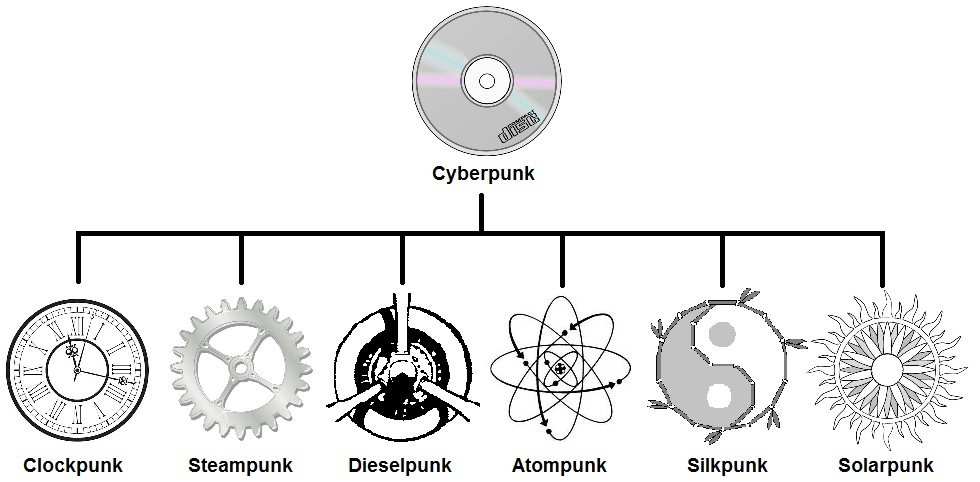The Punk Family just keeps on growing! Its new addition is Solarpunk, a subgenre and movement pointed out to me by a kind fan on Facebook.

The Punk Family started with Cyberpunk, which spawned a series of literary subgenres. Of those, the most popular is Steampunk (a favorite of mine). Most of them are marked by a prime mover, an energy source or main motivating agent, that is part of each one’s name. They all incorporate a ‘punk’ aspect, that is, that at least one character rebels against some aspect of society. Finally, each one comes with its own décor, or visual style and clothing design.
As near as I can determine, Solarpunk started with a post by Olivia Louise in 2014. She envisioned a world of renewable, sustainable, ecological green energy where people are closer to the earth and specialize as craftspeople and artisans. She proposed an aesthetic along Art Nouveau lines.
Others took up this theme and incorporated related threads of thought into Solarpunk, including:
- Transcendence beyond war, aggressive violence, and scarcity;
- A culture celebrating ethnic and sexual diversity and inclusion;
- A decentralized society, including micro-farming, with individuals not dependent on a commercial, global economy to furnish their needs;
- A technology level we already have; no new breakthroughs required; and
- Glass structures and ubiquitous solar cells.
Solarpunk is a reaction against a society marked by the burning of fossil fuels, hierarchal political arrangements, corporate greed, global warming, intolerance of marginalized groups, capitalism, and globalism. That, of course, is the ‘punk’ aspect of Solarpunk.
Given this description, you can understand the appeal of this movement. A quick internet search for ‘solarpunk’ reveals beautiful designs incorporating flowers and other plants, and utopian depictions of a near future within our reach.
Some great descriptions of the Solarpunk movement include posts by Connor Owens, Adam Flynn, and Ben Valentine. Goodreads has a list of Solarpunk literature here.
Solarpunk is still blossoming and forming itself. Its literary landscape is rather sparse, and there’s a clear demand for more Solarpunk stories. This represents a new and potentially fruitful opportunity if you’re a writer of fiction, like—
Poseidon’s Scribe
